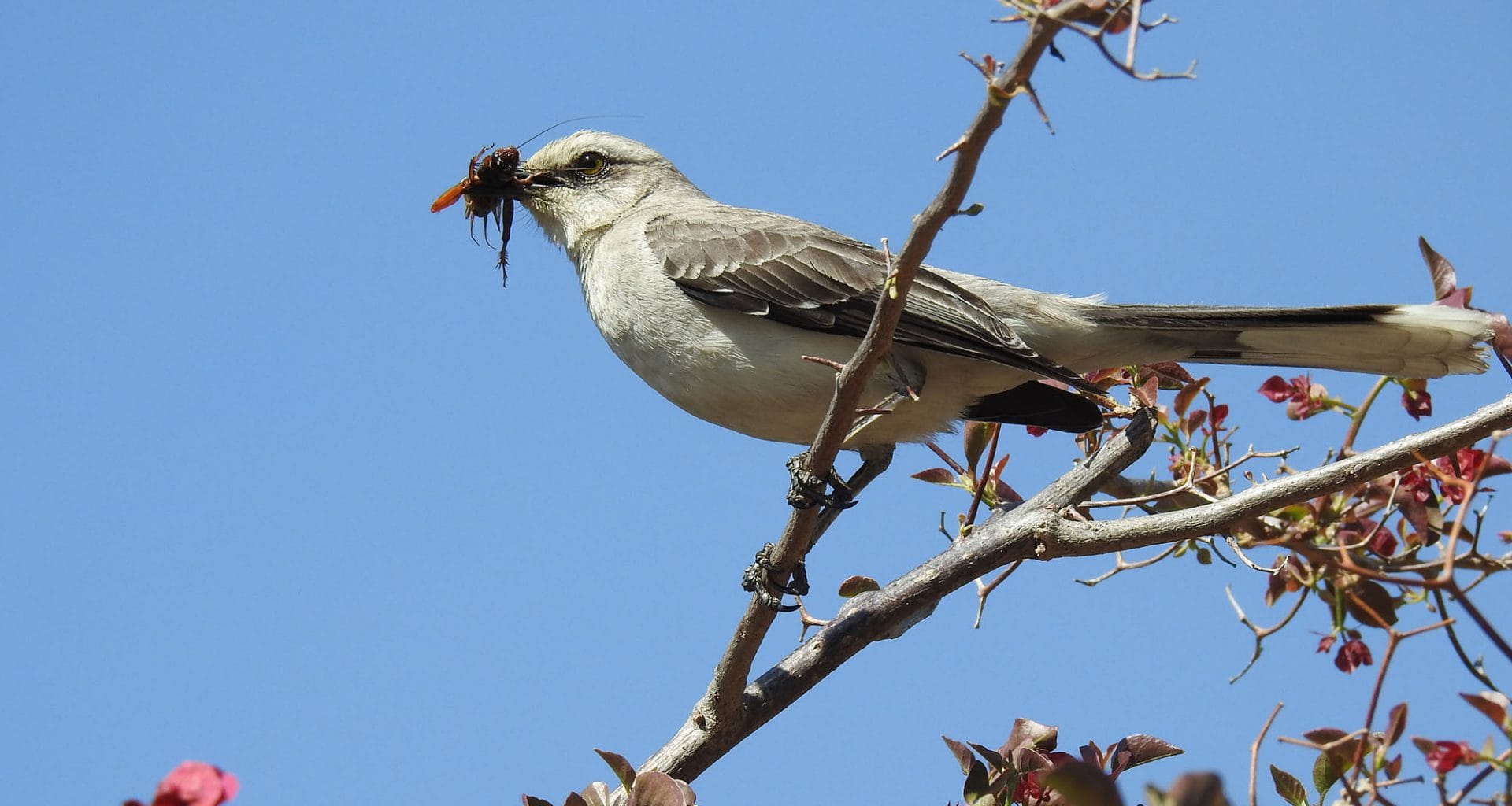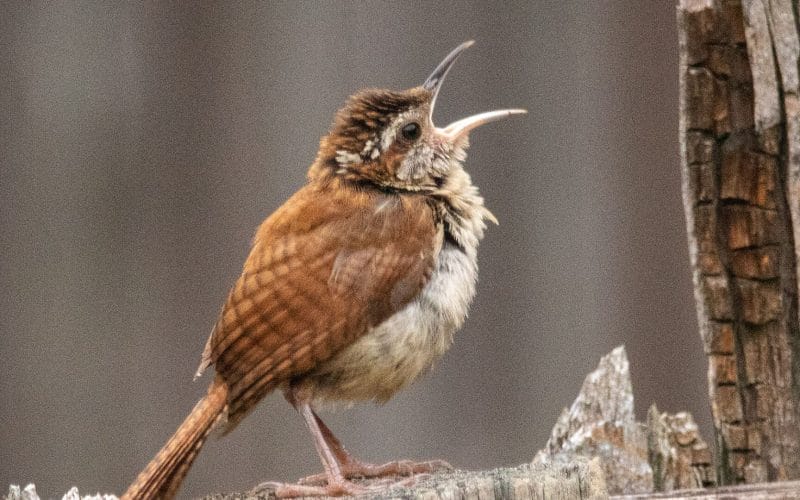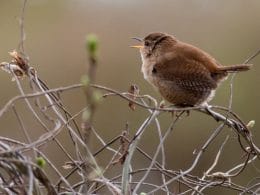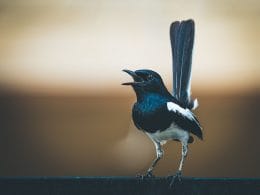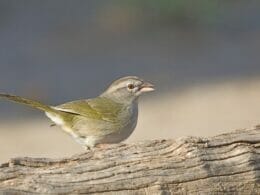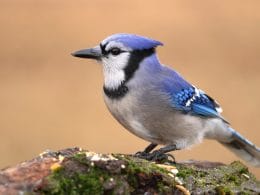There are a number of different ways to attract insect-eating birds to your yard. Food, water, and shelter are essential. Keeping things natural-looking and not too pruned will also invite birds to stay.
If you have a pest problem in your garden, attracting insect-eating birds may help you. Insect-eating birds are also called bug eaters. They eat a variety of insects, larvae, pupae, grubs, worms, caterpillars, grasshoppers, aphids, and more.
Most birds feed their young chicks a variety of insects, grubs, larvae, pupae, and worms. Nesting birds means more mouths to feed, which means more bird activity. It’s important to have the right types of nesting spots if you want to attract certain bird species.
Birdbaths and bird feeders are easy to set up, inexpensive, and a great way to attract a variety of birds. It’s lovely to watch the birds as they splash about in the water or feast on seeds, nuts, fruit, or mealworms at feeders.
Top tip: Remember to keep a good pair of binoculars handy. You can view the birds from a distance without startling them.
Top 7 Ways to Attract Insect Eating Birds

1. Food
Providing food is the top choice on how to attract insect eating birds. If you have enough food around, you will be sure to have bird activity. By providing a variety of different food types for birds to eat, you will attract a wider variety of birds. Most bug-eating birds also eat seeds, fruits, berries, or nuts.
Author Note: Bird feeders are a great way to attract birds, and while they are there, insect eaters will feast on garden pests too. Sparrows, warblers, and Chickadees will take care of unwanted pests such as grasshoppers, caterpillars, slugs, and aphids.
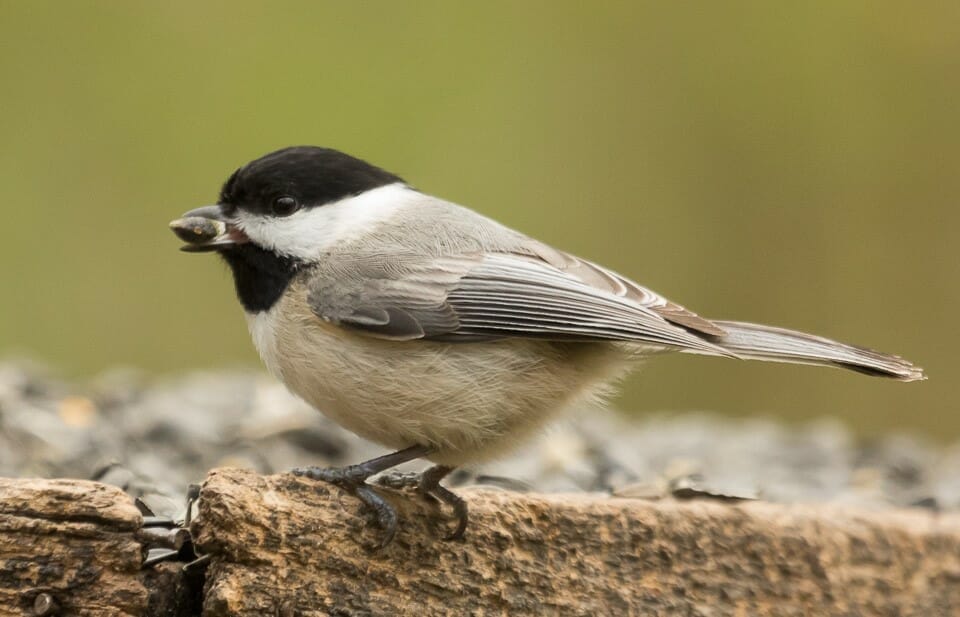
Adding mealworms to your feeder will be almost irresistible to insect-eating birds. Mealworms can be purchased live or dried, although birds prefer live ones. Grosbeaks, bluebirds, wrens, and robins love mealworms.
2. Water
Freshwater is essential for survival as well as for helping birds to cool down on hot days. Having a bathing or drinking spot for birds will be most inviting to them.
If you do not live near a natural water source, then you could put up a birdbath in your garden. A good spot for a birdbath is in a quiet area near, but not directly underneath, bushy shrubs or trees. The branches will provide nearby perching spots and will prevent the birds from feeling too exposed for long periods.
You could also create a garden pond or outdoor fountain. This will add a nice feature to your garden as well as attract a variety of different birds.
Birds love moving water and will flock to a flowing fountain or water feature from blocks away. You can add a bubbler to your birdbath if you would like to make it more appealing to birds.
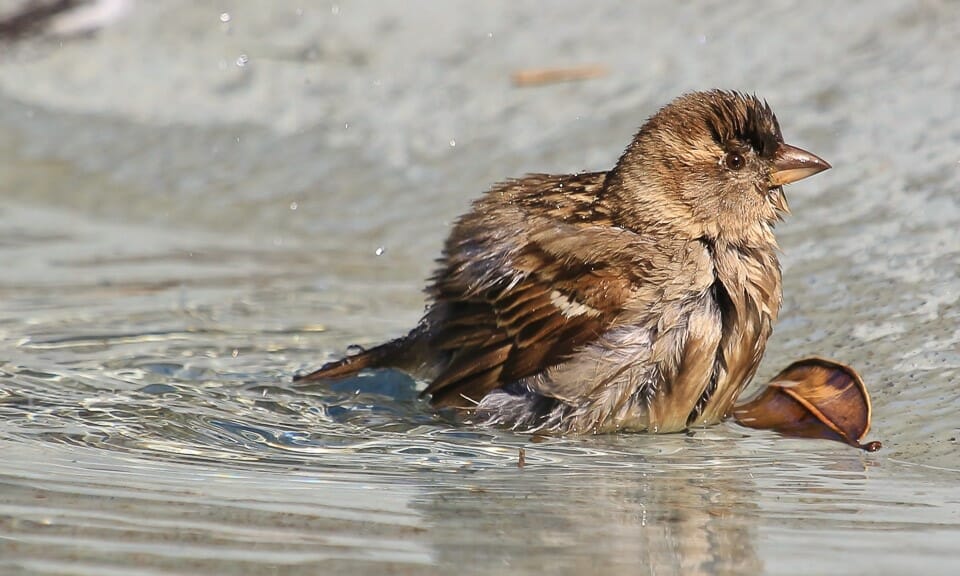
3. Nesting Sites

While not all birds eat from feeders, they all need a place to raise their young. If birds nest in your garden, there will be increased activity up and down as the birds find food for the hungry little ones.
If you would like birds to stick around your garden, it’s important that they have a place to build their nests. Established trees or shrubs will provide good nesting options for birds.
You can also try putting up a birdhouse or attaching a nesting box to a post or tree. Insect lovers such as Purple Martins and Bluebirds make good bird box tenants. Be sure to put up the right kind of bird box according to which birds you would like to attract.
Try to keep nesting areas as natural-looking and undisturbed as possible. You can set up a nest cam if you would like a closer look without disturbing the birds.
4. Cover
It’s essential for birds to have shelter to keep out of harm’s way. Birds need a dry place for stormy weather and a safe place to build their nest. They also need somewhere to hide if there are predators around.
Trees, bushes, and grassy areas provide good refuge spots for birds. Many birds also use the foliage for nest building.
Avoid placing birdbaths directly underneath trees or overhanging branches. Although trees provide cover, falling leaves and bird droppings from above may spoil the water.
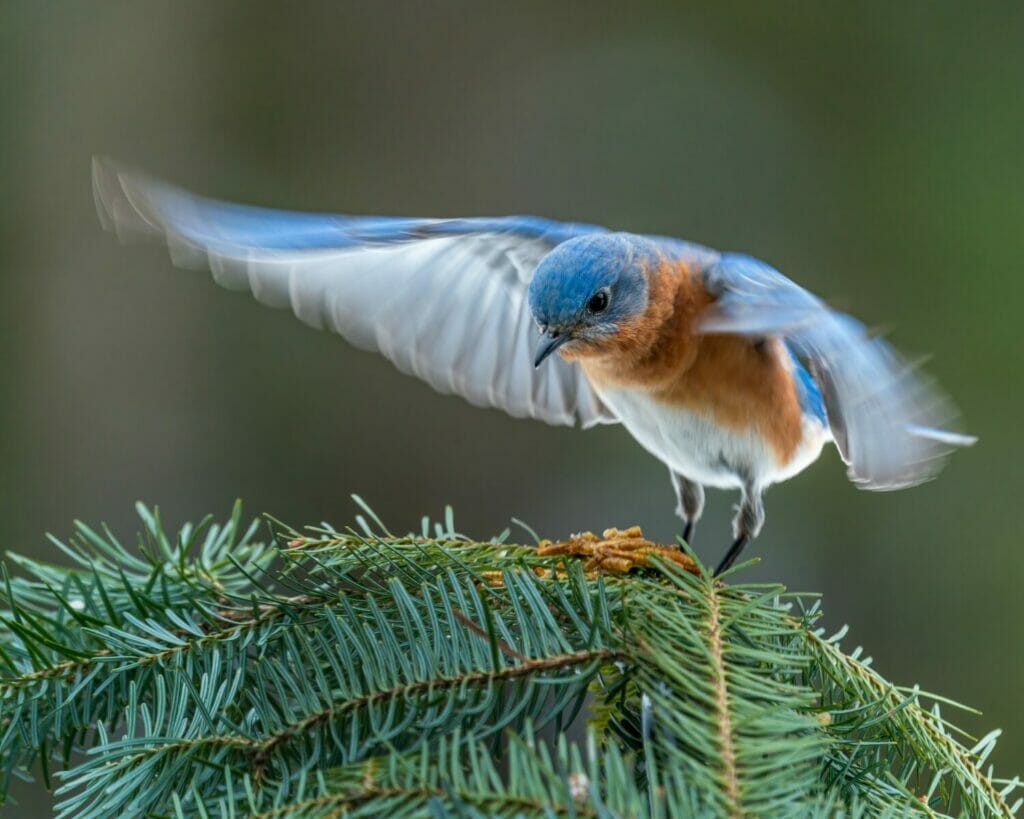
5. Plant Flowers, Shrubs, or Trees
A well-designed garden with a variety of flowers, shrubs, and trees will be sure to attract a number of different birds. Berry bushes and fruit trees are eye-catching and great for fruit-eating birds.
Author Note: Flowers and shrubs provide breeding spots for insects and are perfect feeding grounds for bug eaters. Birds will also be attracted to the nectar, seeds, or fruits of the plants, depending on the species.
Be careful not to use harmful insecticides in your garden as they may be dangerous to birds and other animals too.
Decomposing stumps will attract borers, weevils, grubs, and caterpillars – a real bug eater’s smorgasbord! Bird species such as woodpeckers, barbets, and nuthatches will not be able to resist. Dead trunks and logs also make good nesting and feeding spots.
6. Compost Heaps
Compost heaps are home to many kinds of insects, worms, grubs, and larvae. These make a delicious feast for birds such as African Hoopoes, Robins, Karoo, and Olive Thrushes.
Starting a compost heap in your garden has many different benefits. A compost heap will attract a variety of different insect-eating birds. It is also a great way to dispose of kitchen food scraps without just throwing them into the garbage. Once decomposed, you will have the perfect booster for your soil. Well-nourished soil is vital for a garden to flourish.
Turning the compost pile weekly will help to encourage the leaf matter and food waste to break down faster. It will also expose the worms, bugs, and slugs and make it easier for birds to get their daily grub.
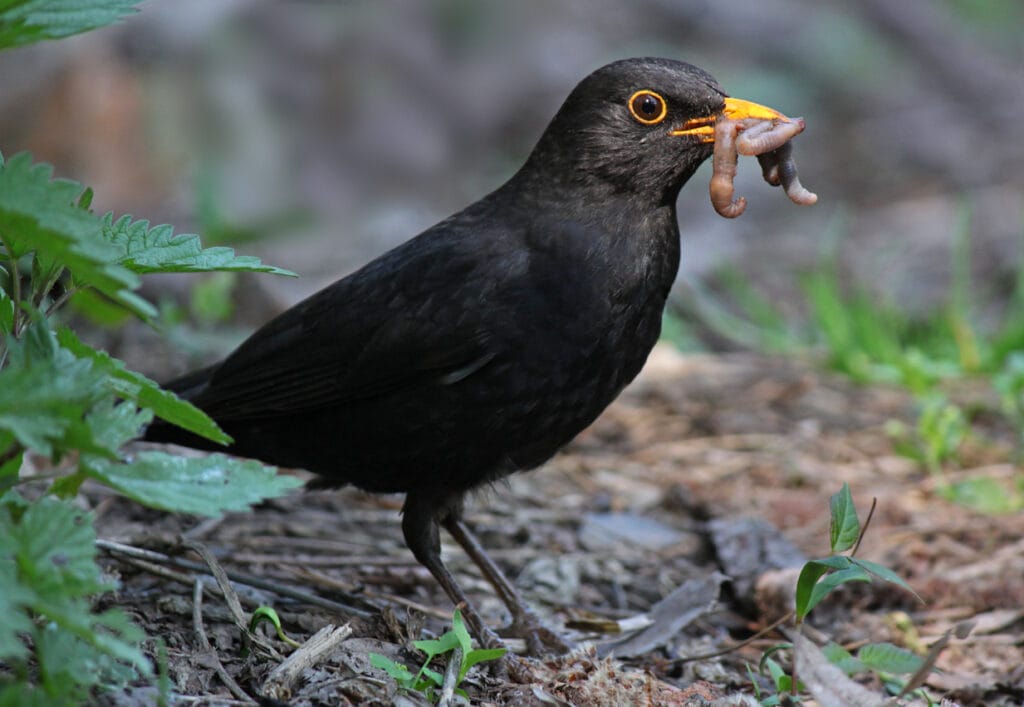
7. Mulching
Collecting leaf matter and selectively placing it around your plants is a great way to prevent weeds from growing. It also helps to keep the moisture in so that the soil doesn’t get too dry on sunny days.
As the leaves decompose, they will provide homes for bugs and insects that break them down. This, in turn, provides vital nutrients, microorganisms, and good bacteria to the soil.
Bug-eating birds love to forage through leafy matter and dense undergrowth for insects and bugs. Wrens, chickadees, and bluebirds all enjoy scavenging for caterpillars, beetles, snails, and grubs.
Which Birds Eat Insects?
Most birds eat insects as some part of their diet. Many birds also take insects, larvae, and grubs back to their nests to feed their young. The type of insect eaten depends on the bird species.
Author Note: Some examples of insects that birds eat are grasshoppers, moths, flies, mosquitoes, aphids, caterpillars, slugs, snails, and more. Birds also eat insects at different life stages – larvae, pupae, and eggs are all great protein options.
Below are a few different kinds of birds that eat insects:
Bluebirds are colorful and sing beautiful songs. They are desirable to have around not only because of their vibrant looks and sounds. Bluebirds are great pest controllers too. They will feast on a selection of grasshoppers, caterpillars, beetles, weevils, berries, seeds, and more.
Wrens like to forage close to the ground. They will turn up decaying leaves and eat grubs, beetles, caterpillars, snails, slung, and ants. They are energetic and will happily hop around eating unwanted garden pests. A great natural alternative to insecticides.
Woodpeckers use their sharp beaks to hammer into tree trunks and stumps in search of food. They feed on wood borers, aphids, weevils, millipedes, and other insects. Leaving dead trees or tree stumps to decompose naturally is a great way to attract woodpeckers.
Purple Martins and certain swallows are beautifully attractive and put on a lovely aerial display as they feed on flying insects. They eat moths, flies, flying ants, and mosquitoes. Purple Martins have special needs so putting up the right nesting box is crucial for attracting these beauties.
Cardinals are bright, bold, and chirpy. They love to sing, and their cheerful song is enough to put a smile on anyone’s face. Cardinals like to eat seeds and fruits, but they feed insects to their young. A feeder with black oil sunflower seeds and fruit is a perfect way to attract cardinals. You could also plant some shrubs that grow berries or fruits.
Sparrows are common in urban and suburban yards. They are useful to have around as they feed on insects they find on plants and on the ground. They also eat seeds, including the seeds of unwanted weeds. Sparrows make the perfect eco-friendly pest and weed control team. A birdbath or platform feeder with sunflower seeds is a great way to attract sparrows.
Conclusion
There are many different kinds of birds that eat insects, grubs, larvae, aphids, grasshoppers, and other garden pests. Attracting birds to your garden is a great natural pest control method.
Many bug eaters also eat seeds, fruits, nuts, and berries. Black oil sunflower seeds are extremely popular among a wide variety of birds. Add them to your birdfeeder, sit back and enjoy the view.
If you are planning a garden or doing some landscaping, planting shrubs and trees is a great way to attract birds. Trees and bushes will provide feeding and nesting options for a variety of birds.
Bird boxes are easy and convenient to put up. They are a great way to attract birds if you do not have many established trees or bushes. If you want to attract fussy birds such as bluebirds, you can put up a special kind of bird box. This will encourage them to stick around.
We hope you enjoyed this article on how to attract insect eating birds.
Fly high friends!
FAQ
Nearly 2/3 of all bird species will eat insects. Some of them only do it during breeding in order to give their chicks enough protein to grow and some just love them all year round.
If a bird eats insects, then they will certainly take a cockroach. The problem is that they have such a hard shell and they are nocturnal so are rarely seen by most insect eating birds.
It is a bird that eats only fruits. Insect eating birds are insectivorous. Most birds are a combination of categories or omnivorous – meaning they will eat pretty much anything.




